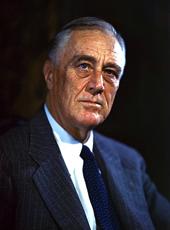
Address at the Cornerstone Laying of the Naval Medical Center, Bethesda, Maryland.
Admiral McIntire, ladies and gentlemen:
This morning at the Tomb of the Unknown Soldier, the American people paid their tribute at the shrine of those who gave their lives in defense of our country. This afternoon it is fitting that we assemble again in the patriotic cause of preserving the well-being of those who, living, wear the uniform of our defense.
This Nation is gaining in foresight. This Nation, thereby, is saving human life in war and in peace.
This mission today is particularly close to my heart. During the trying days of the World War, when serving as Assistant Secretary of the Navy, I well remember the tremendous load of patients that were cared for under the restricted facilities at the Naval Hospital overlooking Constitution Avenue. That hospital occupies an historic site—the place where General Braddock landed in 1755 when George Washington was serving as his aide-de-camp. In 1842, the Naval Observatory was located there and in 1893, the grounds and the building were assigned as the Naval Museum of Hygiene. Later, in 1902, the Naval Medical School was founded and, as you know, has accomplished great things in the training of medical officers and in the care of tens of thousands of our naval personnel.
The need for increased capacity for better facilities led your Government some years ago to initiate the move from the old historic site to the present one. These new buildings had become a necessity even before the existing expansion of our defense forces. I have referred to foresight and that is one reason that in planning we have provided opportunity for expansion to any point that might become necessary in a national mobilization.
When this building is completed we shall have a 500-bed hospital incomparably modern in structure and equipment. On these grounds will be provided quarters for the staff officers and nurses and enlisted personnel.
Its 247 acres provide ample space for any emergency that may be reasonably anticipated. It is convenient to transportation by road and by rail. Across the highway, with its great research laboratories, the National Institute of Health, dedicated ten days ago, is still our good neighbor.
And within this Naval Medical School itself will be joined the task of the clinician and the teacher. In other words, technical instruction will go hand in hand with the care of human illness.
I am happy, too, that the physical work of construction has proceeded so well. Through efficient and harmonious cooperation among Government and industry and labor, it is at least three months ahead of schedule and we hope to occupy these buildings by next October, and we shall have another ceremony at that time. To all who have and have had a part in this work, I give the thanks of your Government.
In the years to come I am confident that the striking architecture of this great center will receive approval. It is a departure from the colonial type of many recent structures, as it is also from the monumental classic design of the buildings within the District of Columbia. It combines, I think, a practical usefulness for the facilities which will inhabit it and, at the same time, the harmony of its lines gives expression to the thought that art is not dead in our midst.
This Naval Medical Centre of which I am about to lay the cornerstone is a tribute to a living democracy—a democracy which intends to keep on living.
Franklin D. Roosevelt, Address at the Cornerstone Laying of the Naval Medical Center, Bethesda, Maryland. Online by Gerhard Peters and John T. Woolley, The American Presidency Project https://www.presidency.ucsb.edu/node/209354

